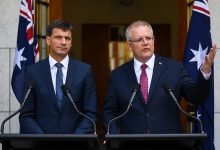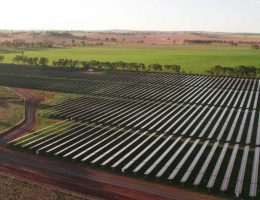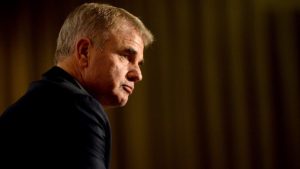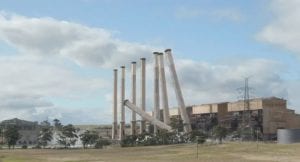The recent release of the International Energy Agency (IEA) World Energy Outlook (WEO) has just been released – all 450 ish pages of it. The IEA – once set up to represent the oil industry, but now trying hard to shake off that history – has finally turned the big ship around and has taken a small step towards joining the rest of us.
After several years of taking criticism for underplaying the growth of renewables like wind and solar, the IEA now declares that solar will become the ‘new king’ of electricity, and has updated bullish forecasts for the growth of renewables in the coming decades, even in higher-emissions, worst case scenarios.
On the surface, this is a welcome change. But it’s still insufficient – and could potentially clear space for the creation of new fossil fuel infrastructure, and increased extraction of oil and gas. And even these baby steps serve as an embarrassment to Australia’s government – currently moving backwards on renewables and climate.
The IEA’s focus is on higher-emissions pathways
The report also includes more ambitious climate scenarios, such as net zero by 2050. A word frequency analysis by Carbon Brief’s Simon Evans found that mentions of ‘net zero’ have increased from around five mentions in the 2019 report to 40 mentions per 100 pages in the 2020 report.
But the middle scenario, ‘Sustainable Development Scenario’ or SDS, has just over 140 mentions per 100 pages. The least-ambitious policy has around 180. Oil Change International’s Hannah McKinnon highlights the fact that even though the inclusion of the net zero scenario is a good thing, it is obscuring has specific consequences for decisions around new oil exploration:
(1/3)So, here is how the @IEA misdirects investment into #fossilfuel by marginalizing 1.5°C: The figure below shows projected #oil demand under SDS and STEPS compared to projected supply from existing versus new fields. The IEA did not include NZE2050 in this graph-we added it. pic.twitter.com/6kEdZdcI1O
— Hannah McKinnon (@mckinnon_hannah) October 13, 2020
OCI also highlight the fact that this scenario leans heavily on carbon dioxide removal instead of shutting down fossil fuels and is only modelled out to 2030. The less ambitious pathways in the report, if followed as a guide by decision makers as ‘safe’ options, would lead to serious and significant extra levels of climate impacts – the best case scenarios is essentially treated as too improbable to talk about.
The IEA is playing catch up, but they have not caught up. It is very neatly analogous to the position of Australia’s Chief Scientist, Dr Alan Finkel, who recently shrugged off the difference between meeting net zero by 2100 and meeting it in 2050 as ‘different ways to reach the same goal’, as I explored in this thread. The prospect of going as fast as we can to reduce emissions is still treated as unacceptable idealism, rather than near-future reality with solid technological, economic and social backing.
Even though the report has only been out for a day, there is increasing criticism of the balance of future visions within the 2020 WEO. “It has no credibility when looking into the future”, said Carbon Tracker’s Kingsmill Bond, on the report’s solar price forecasts. “The WEO expects that the rate of cost falls reduces to just 2% a year in the period to 2040. This is simply not credible”. The IEA represents its unambitious middle scenario (the SDS) as ‘very ambitious’, when in reality, after China’s net zero by 2060 pledge, it’s likely to be more ‘central’.
Joeri Rogelj, a lecturer in climate change and the environment at the Grantham Institute at Imperial College London and IPCC author, points out that the net zero scenario is even further sidelined by excluding raw data for those purchasing the report. “A first, crucial step is that all underlying data of the NZE2050 scenario should be made available with the same detail as the other WEO scenarios: the Stated Policies (STEPS) or Sustainable Development Scenario (SDS). It seems bizarre not to provide these key indicators if fostering a better understanding of the low-carbon transition is the intended outcome.
The IEA remains defensive about their modelling choices. “Significant new policies that were announced subsequently changed the trajectories of wind and solar by generating new demand and investment, thereby helping foster technological advances and cost declines”, they write on their FAQ, They took a step in the right direction, but they need to take a hundred more to be aligned with the mission to rapidly expand renewable energy technology at a speed that ensures access to energy while rectifying the problems of atmospheric heating.
Given the incredible influence of this report, it is extremely vital that it keeps moving in the right direction; and far faster than it has in one year, lest it is left behind. Which brings us, very neatly to another extremely important takeaway from WEO 2020: it highlights that Australia is in one of the worst positions around the world, on climate.
Australia is set to miss the post-covid climate boom – even the laggards are playing catch-up
Australia is barely mentioned in this report, but where it is, it is almost always in the context of the country’s exposure to the state of climate action around the world, specifically as a major exporter of coal and gas. The reports two core scenarios (STEPS and the SDS) explore the change in demand for extracted fossil fuels, and as you might expect, the outcomes with lower global temperatures (SDS, net zero by 2070) see a decline in coal, oil and natural gas post-pandemic:
 As highlighted above, the STEPS scenario – essentially the worst-case – tends to dominate the report. In this scenario, fossil gas production in Australia increases by around 45 bcm between 2019 to 2040 – the seventh largest increase in the world. Australia’s ‘gas-fired recovery’ is aligned perfectly with the worst-case climate scenario, according to IEA’s WEO 2020. The urgency of the government’s gas-fired government support is makes sense too – the WEO 2020 explains that in a scenario in which ‘recovery’ from COVID19 is delayed, Australia’s fossil gas export revenue decreases by around $90 billion up to 2030, and up to $150 billion by 2040.
As highlighted above, the STEPS scenario – essentially the worst-case – tends to dominate the report. In this scenario, fossil gas production in Australia increases by around 45 bcm between 2019 to 2040 – the seventh largest increase in the world. Australia’s ‘gas-fired recovery’ is aligned perfectly with the worst-case climate scenario, according to IEA’s WEO 2020. The urgency of the government’s gas-fired government support is makes sense too – the WEO 2020 explains that in a scenario in which ‘recovery’ from COVID19 is delayed, Australia’s fossil gas export revenue decreases by around $90 billion up to 2030, and up to $150 billion by 2040.
These are terrifying numbers for companies that dig up and sell gas to the world – hence, their presumed focus on government support to protect them from these possibilities (you can see why the IEA doesn’t want fossil fuel companies reading or engaging with too much detail about what a net zero by 2050 scenario would look like, in terms of raw lost billions of dollars).
Buried deep in the hundreds of pages is a nice illustration of how modelling actual climate ambition leaves a terrible taste in the mouths of fossil fuel companies perusing the report – this graphic simply shows that in the worst case scenario, oil and gas output increases, and in the best case, they both significantly decrease, up to 2030:
Later, the report compares Australia’s coal production within two scenarios (again, excluding net zero by 2050!). Even in the less-ambitious STEPS scenario, coal production in Australia declines, but the reductions is significant – both for Australia and the world – in the better-case SDS:
“Global coal trade in thermal and coking coal is now projected to decline by around 15% in the STEPS over the 2019-30 period. Imports to India barely return to pre-Covid levels over the coming decade as most of the projected growth in coal demand is met by a rise in domestic production. There is a substantial decline in imports to China, Japan and Korea as well as to Europe”, explain the IEA.
Australia seems essentially to be modelled as having – literally – zero climate policies of any kind, too. In the appendices, the policy assumptions for ‘Australia and New Zealand’ only mention New Zealand, for all scenarios. Australia, in this report, is static and unresponsive – and of course it ought to be modelled this way. The government has openly signalled that this is what they want – and Australia remains badly exposed, even in the slowest change scenarios, to massive changes and threats to its increasing reliance on fossil fuel exports, alongside its dismissal of renewables.
Who does the imagining matters more than you imagine
There have been a flurry of criticisms of the IEA’s WEO, many very reasonable. It matters that their imagined futures are constrained, and it matters which possibilities are either unexplored or sidelined in this report. But the organisation has come some way from previous years, when their reports badly misunderstood the nature of technological change. By starting at the status quo, and adding morsels of change deemed to be tolerable to its audience, the IEA has, again, presented a too-careful view of the future; dismissing ambition, technological and political change.
Other explorations of the future, such as ClimateWorks Australia’s net zero by 2050 plan, start with the end goal and work backwards, discovering that the societal, political and technological changes to meet this ambition are nowhere near as grand as warned, and far more beneficial (economically and personally) to Australians than we know. The ‘Rewiring America‘ is another example, establishing a baseline end point and discovering the incredible jobs and economic benefits that would flow from a massive mobilisation to remake the country.
The IEA do not embrace this type of vision. They cast doubt on net zero by 2050 in their FAQ, along with the report itself “It would require an unprecedented mobilisation of resources worldwide. When we look at the situation around the world today, that kind of mobilisation is clearly not happening. We are still far from the kinds of energy policies and investments that would put global emissions into a structural decline towards net-zero”, they write.
Like the now-better mistaken underestimations of renewables from previous years, this underestimation of the rate of broader climate action, from citizens, governments, business and communities around the world, seems to me to be the new core of skepticism. For whatever reason, there is still no effort to imagine the shape of a best-case future. Australia’s government has the chance to depart this attitude, and become a global leader, instead of being even worse than the laggards playing catch up.











